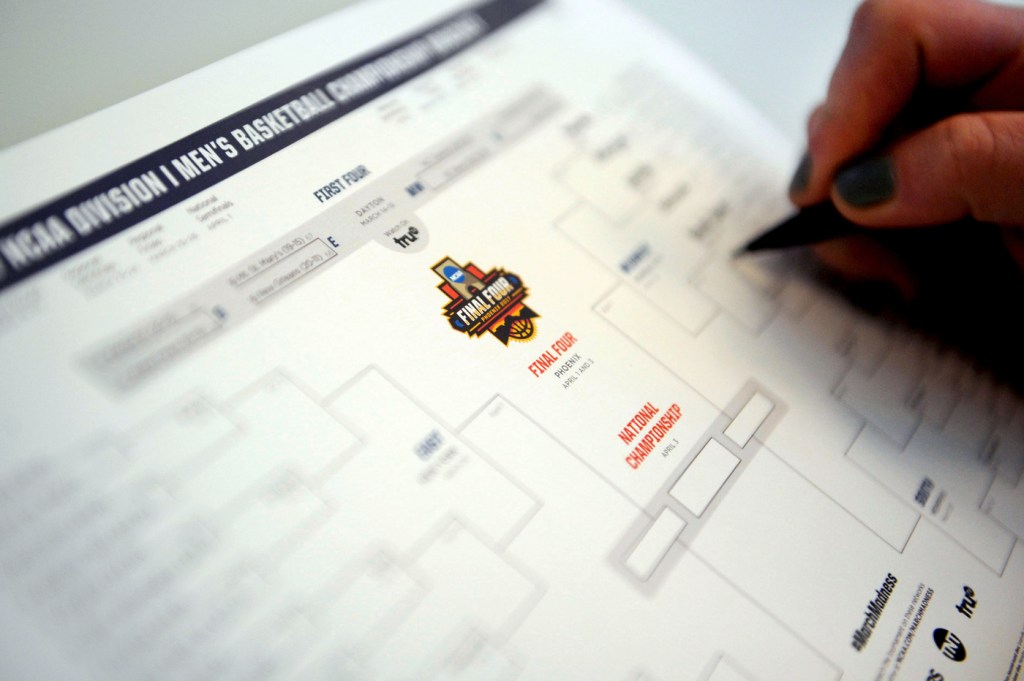Why the NCAA Tournament is so hard to predict

Statisticians put the odds of filling out a perfect NCAA Tournament bracket somewhere between 1 in 9,223,372,036,854,775,808 and 1 in 2,000,000,000, depending on how you weigh the odds of each game.
So, it’s a long shot—a really loooooooong shot—that anyone will pick all the right teams. In fact, a study of verified online brackets at NCAA.com, Bleacher Report, CBS, ESPN, and Yahoo revealed that the longest anyone has gone without losing is 25 games into the tournament.
And yet, each March, millions of people, inflicted with a case of March Madness, fill out their tournament brackets for a shot at glory. Maybe it’s the excitement of a buzzer-beater (like Villanova’s 3-pointer in 2016 to win the national championship); the chance to end a drought (like Northeastern’s NCAA Tournament run in 2015); or the thrill of catching history in the making (like UConn winning both the men’s and women’s titles in 2004 and again in 2014). But for many, the pull of college basketball in March is simply too strong to resist.
Still, we’re looking for any leg up in filling out our brackets, so we checked in with Robert Lieb, a professor in the D’Amore-McKim School of Business with strategic planning expertise. Here, he explains what makes this tournament so hard to predict and whether he uses his command of statistics to help inform his own bracket.
Why is it so difficult to predict the outcome of this particular tournament?
It’s very hard to precisely predict the outcome of this tournament for a number of reasons. There is a certain degree of parity in NCAA college programs, and while schools like Kentucky, North Carolina, Duke, Kansas, and Louisville attract many of the high school All-Americans, many talented players are concerned that they won’t start in such programs and go elsewhere. So, the talent has spread out to many other programs and on any given day a player or a team can have one of those games where all the shots are dropping and the ball is bouncing the right way. On days like that, another team can beat anyone and that’s why there are many upsets in the tournament. Despite the upsets, the teams I mentioned above are almost always represented in the Final Four, and often win the tournament.
What are the chances that all four No. 1 seeds make it to the Final Four?
It’s unusual that all four seeds make the Final Four, but at least one of them does nearly every year. The only time all four No. 1s reached the Final Four was in 2008. But since 2010, only eight of the 28 Final Four appearances have come from No. 1 seeds.
Do you fill out a bracket? If so, how much do you weigh your own knowledge of statistics when making your picks?
I’m not a big formal bracket guy, but I follow the tournament pretty closely and have expectations of the teams that will get to the championship game. Rather than statistics, I use the “eye test.” I played a lot of basketball and have watched it at a high level for years. Having watched many of the top teams, I make my selections based upon what I have seen.
One final question for you: Who are you picking to take home the trophy this year?
I would like to say UCLA, but I think it will be North Carolina.





